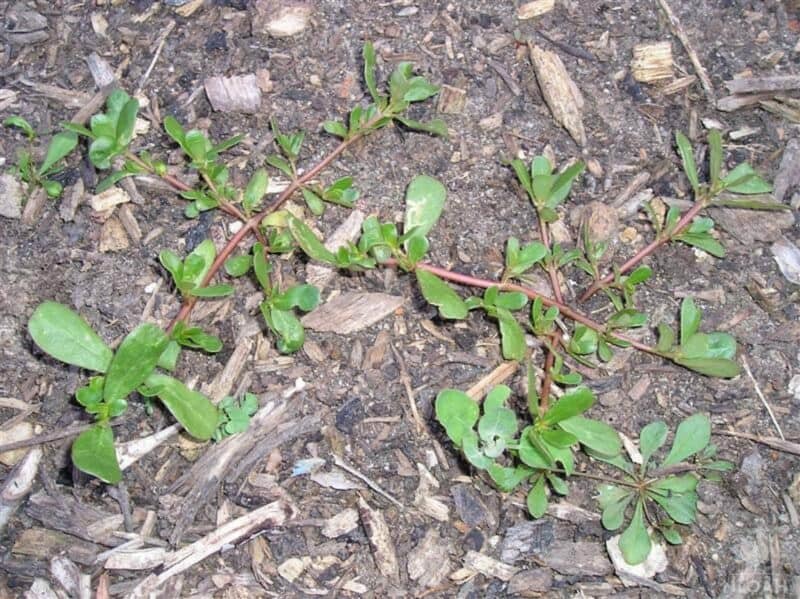Hiking, camping, and orienteering were a huge part of my childhood. I was camping at least two or three times a month and on hiking trails almost every weekend. These hiking trips took me through many different game reserves, and it was great!

I could watch a herd of wildebeest (water buffalo) – from a safe distance – without the interference of a fence or barrier. The wildlife was phenomenal, and the plants and flowers were gorgeous – which led to some serious temptation to pick or eat something.
Mom had given us a rundown of hiking safety and one of the cardinal rules is that if you don’t know what it is, don’t touch it – certainly don’t eat it!
So, with that in mind, what about purslane? Is it edible?
Yes, you can eat purslane. The leaves, flowers, stems and seeds are all edible. It’s highly nutritious being high in Omega 3 acids as well as vitamins A (beta-carotene) and C, Iron, Magnesium, Manganese, Potassium, and Calcium. There are also traces of B vitamins, copper, and phosphorous – all of which your body needs to function normally.
Common Purslane
Common purslane (Portulaca Oleracea), also called duckweed and/or little hogweed, is a succulent plant in the Portulacaceae family.
It has red stems with leaves alternating at the joints, yellow flowers and a tap root surrounded by strong secondary roots which allows it to grow in poor soil. There are many variants, but they’re all classified as Portulaca Oleracea.
These plants have a wide range and are found in North Africa, Malesia, Southern Europe, Australasia, the Middle East, and the Indian Subcontinent. They’re also present in the Americas – presumably since pre-Columbian days.
One of the best things about this plant is that it can remove/reduce salt content from agricultural soil. If you needed a reason to keep it on your farm/homestead, there you go.
It’s also compatible with almost any soil making it super easy to grow in your veggie garden and can be harvested within 4 – 6 weeks. It’s also got a higher tolerance towards pests which would usually damage other plants – although there are some bugs that can and do cause problems.
Fun fact: Portulaca Oleracea is one of only a few plants that can switch between C4 (Carbon Fixation) photosynthesis and CAM (Crassulacean Acid Metabolism) photosynthesis. It usually makes the switch from C4 to CAM during a drought
Culinary Use: Highly Nutritious Weed
Common purslane has been used in traditional/alternative medicine and cuisine for millennia and that’s not likely to change anytime soon. It tastes a bit like spinach and is great for garnishing soups. You can use it in salads and sandwiches as a lettuce substitute. You can also stir fry or cook it (the way you cook spinach).
Soups can be thickened, and stews can be given a bit of extra flavor. These are only a few uses for common purslane, but why would you eat it? Well, it’s very nutritious but has a low-calorie amount.
Check this out, purslane is high in beta-carotene, vitamin C, Manganese, Magnesium, Potassium, Iron, and Calcium. It’s also high in Omega-3 fatty acids, which is very important as we cannot produce Omega-3 acids on our own.
Since our bodies, unfortunately, cannot produce Omega-3 fatty acids on their own, we must get them out of our diets. This means eating lots of fatty fish (salmon, tuna, seabass), and greens like spinach, seaweed, and algae. You can also eat walnuts and/or kidney beans.
So, Can You Eat Purslane
Okay, so let’s recap:
- Yes, purslane is edible and is highly nutritious.
- It has a widespread range.
- It can grow pretty much anywhere and has a hight pest-tolerance.
- It’s been used in traditional medicine and cuisine for thousands of years.
Now, obviously you should be careful about this sort of thing. Don’t just pull out a weed and eat it; you should only ever eat a plant if you know what it is. Eating the wrong thing can be very… unpleasant, after all.
The bottom line is, and I probably sound like a broken record at this point, if you don’t know what it is, don’t touch it! Don’t put it anywhere near your mouth either!
I hope you guys and gals enjoyed the article and found it informative and/or helpful in some way. As always, I’d like to say thanks very much for reading and I’ll see you for the next one. Until then, take care!

Greg is a South African farmer and homesteader who’s been around animals ever since he can remember. He’s also an avid camper and hiker.
